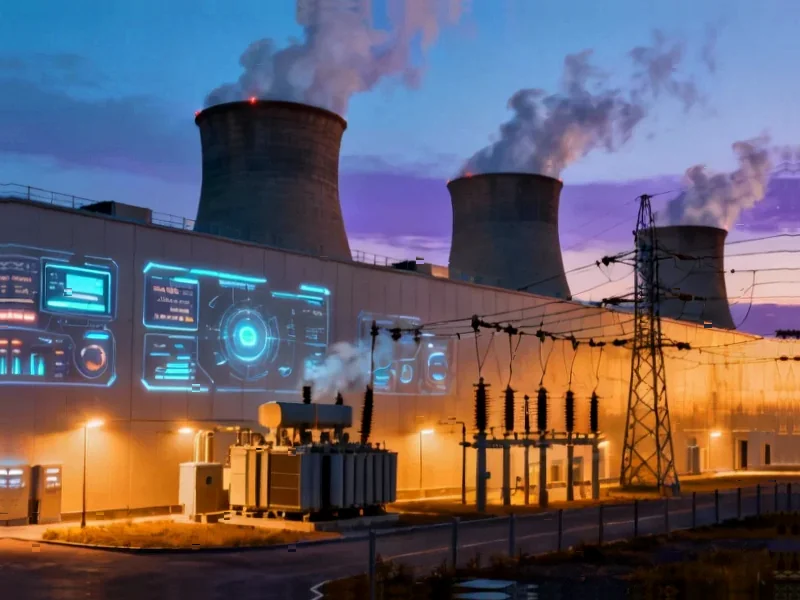According to TechRepublic, Microsoft has signed a $9.7 billion deal with Sydney-based data center provider IREN for AI cloud capacity over the next five years. The agreement gives Microsoft access to accelerator systems built on Nvidia’s GB300 architecture, with IREN committing to purchase $5.8 billion worth of GPUs and related equipment. Microsoft becomes IREN’s largest customer, generating $1.94 billion in annualized revenue, and has already provided a 20 percent prepayment according to IREN CEO Daniel Roberts. This follows Microsoft’s similar $19.4 billion deal with Nebius in September for AI infrastructure from a New Jersey data center. This massive infrastructure spending spree raises critical questions about Microsoft’s AI strategy.
The Supply Chain Crisis No One’s Talking About
Microsoft’s willingness to commit over $30 billion to third-party data center operators in just months reveals a deeper crisis in AI infrastructure that the company isn’t publicly acknowledging. While Microsoft, Amazon, and Google collectively spend hundreds of billions on their own data centers, they’re hitting physical constraints that money alone can’t solve. The transition from crypto mining to AI infrastructure isn’t just opportunistic – it’s filling a critical gap that hyperscalers can’t address quickly enough. These former mining operations already have the power infrastructure, cooling systems, and physical space that new data centers require years to permit and build. Microsoft isn’t just buying compute capacity – it’s buying time.
The Nvidia Dependency Problem
What’s particularly concerning about this deal structure is Microsoft’s deepening dependency on Nvidia’s roadmap. The specific mention of GB300 architecture means Microsoft is locking itself into Nvidia’s proprietary ecosystem for years, despite the company’s significant investments in developing its own AI chips like the Maia series. This creates a strategic vulnerability where Microsoft’s AI ambitions become tied to Nvidia’s execution and pricing power. With Nvidia commanding over 80% of the AI chip market, Microsoft essentially has no choice but to pay whatever Nvidia demands for access to cutting-edge hardware.
The Utilization Risk Nobody’s Calculating
The most significant unspoken risk in these massive AI infrastructure deals is utilization. Microsoft is committing to pay for capacity regardless of whether customers actually use it. We’ve seen this movie before during the dot-com bubble and the early cloud computing era – companies overbuilt capacity based on projected demand that never materialized. The current AI boom could follow a similar pattern if enterprise adoption proves slower than expected or if AI workloads become more efficient, requiring less compute power over time. IREN’s $5.8 billion GPU purchase essentially becomes Microsoft’s problem if demand doesn’t materialize.
The OpenAI Strategic Conflict
Microsoft’s infrastructure spending creates an interesting conflict with its OpenAI partnership. While Microsoft benefits from OpenAI’s success through its 27% stake and revenue sharing, the company is also building infrastructure that competes directly with OpenAI’s own compute needs. As OpenAI scales, it will increasingly compete with Microsoft’s other enterprise customers for the same GPU resources that Microsoft is spending billions to secure. This creates a fundamental tension between being an infrastructure provider and an AI developer that Microsoft hasn’t fully resolved.
The Crypto Mining Transition Isn’t Risk-Free
While the article mentions IREN’s crypto mining background as an advantage, this legacy comes with significant operational risks that Microsoft is now inheriting. Many former mining operations are located in regions with questionable power reliability and environmental compliance records. The rapid scaling from mining operations to enterprise-grade AI infrastructure requires substantial upgrades to security, redundancy, and service level agreements that these companies may not be fully prepared to deliver. Microsoft’s quality control teams will be working overtime to ensure these facilities meet enterprise standards.
Long-Term Strategic Implications
Ultimately, Microsoft’s aggressive infrastructure spending represents a calculated bet that AI demand will continue growing exponentially. The company is essentially paying a premium to avoid being capacity-constrained during what it sees as a critical window for establishing market leadership. However, the sheer scale of these commitments – over $30 billion in just a few months – suggests either extraordinary confidence in AI adoption or genuine panic about being left behind. The truth likely lies somewhere in between, but the financial exposure is very real and could haunt Microsoft if the AI bubble shows any signs of deflating.




